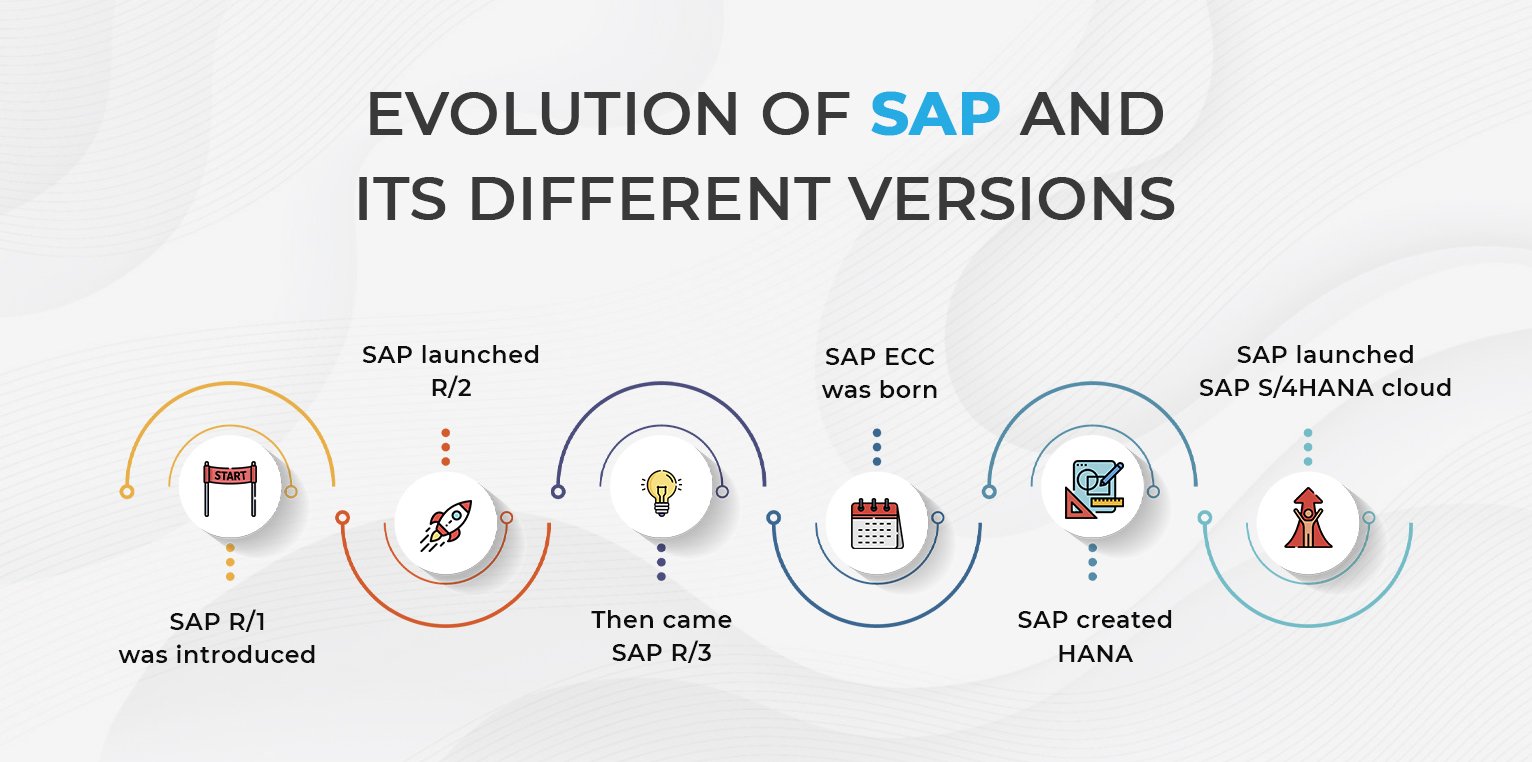SAP (Systems, Applications, and Products) has been a cornerstone of enterprise software since its inception. Over the decades, SAP has continually evolved, adapting to the changing needs of businesses and advancements in technology. From the early days of mainframe systems to today’s cutting-edge, cloud-based platforms, SAP’s journey reflects a commitment to innovation and efficiency.
Let’s explore the key milestones in SAP’s evolution and its different versions, each bringing transformative features to businesses worldwide.
1. SAP R/1: The Beginning
Year Introduced: 1972
- SAP’s first product, SAP R/1, was developed for mainframe systems and focused on financial accounting.
- It featured a one-tier architecture, combining presentation, application, and data layers into a single system.
Limitations: While groundbreaking for its time, SAP R/1 lacked scalability and flexibility, leading to the development of its successor.
2. SAP R/2: A Leap Forward
Year Introduced: 1979
- SAP R/2 moved to a two-tier architecture, enabling centralized data processing on mainframes while users accessed information remotely via terminals.
- Key innovation: Real-time data processing, which set SAP apart from competitors.
Impact: It became a popular choice for large enterprises, particularly in Europe, thanks to its robust functionality for financials, logistics, and HR.
3. SAP R/3: The Client-Server Revolution
Year Introduced: 1992
- SAP R/3 marked a shift to three-tier architecture (presentation, application, and database layers).
- It moved away from mainframes to client-server systems, significantly enhancing scalability and flexibility.
- Key Features: Modules for financials, HR, materials management, and sales, providing a fully integrated enterprise resource planning (ERP) system.
Legacy: SAP R/3 became a global standard for ERP, driving widespread adoption across industries.
4. SAP ECC: The Next Generation
Year Introduced: 2004
- SAP ECC (ERP Central Component) built on the foundation of R/3 but introduced NetWeaver, a technology platform that enabled seamless integration of applications and processes.
- Key Features: Enhanced customization, advanced analytics, and industry-specific solutions.
- Modules like SAP FICO, SD, MM, and PP became synonymous with business process excellence.
Impact: SAP ECC became the backbone of countless enterprises worldwide, offering unparalleled flexibility and integration capabilities.
5. SAP S/4HANA: The Intelligent Enterprise
Year Introduced: 2015
- SAP S/4HANA is SAP’s latest and most advanced ERP solution, leveraging in-memory computing through the HANA database.
- Designed for cloud, on-premise, or hybrid deployments, S/4HANA supports real-time data processing and advanced analytics.
Key Innovations:
- Simplified data models for faster performance.
- Embedded artificial intelligence and machine learning capabilities.
- Industry-specific solutions tailored for modern businesses.
- Intuitive, user-friendly interface through SAP Fiori.
Impact: S/4HANA is the cornerstone of SAP’s vision for the Intelligent Enterprise, enabling businesses to adapt to dynamic market demands and capitalize on real-time insights.
Comparing the Versions
| Version | Key Features | Technology | Deployment |
|---|---|---|---|
| SAP R/1 | Financial Accounting | One-Tier Mainframe | On-Premise |
| SAP R/2 | Real-Time Data Processing | Two-Tier Mainframe | On-Premise |
| SAP R/3 | Fully Integrated ERP | Three-Tier Client-Server | On-Premise |
| SAP ECC | Advanced Analytics & Integration | NetWeaver Technology | On-Premise |
| SAP S/4HANA | Real-Time Insights, AI, ML | In-Memory Computing (HANA) | Cloud, On-Premise, Hybrid |
The Future of SAP
As SAP continues to innovate, its focus is on enabling businesses to become intelligent enterprises. The integration of emerging technologies like AI, IoT, and blockchain ensures that SAP remains at the forefront of enterprise solutions.
SAP’s evolution isn’t just about software—it’s about empowering businesses to work smarter, adapt faster, and achieve more. Whether you’re upgrading from ECC or starting fresh with S/4HANA, SAP’s legacy of innovation provides a robust foundation for future growth.



